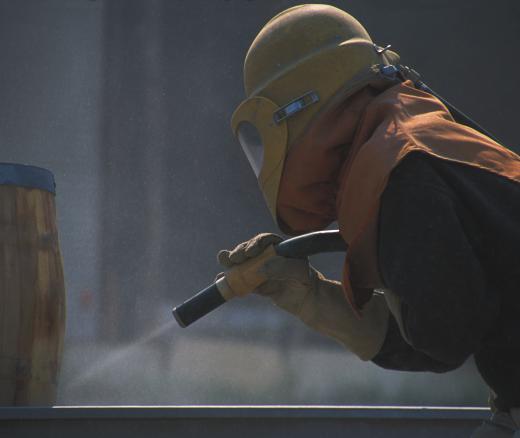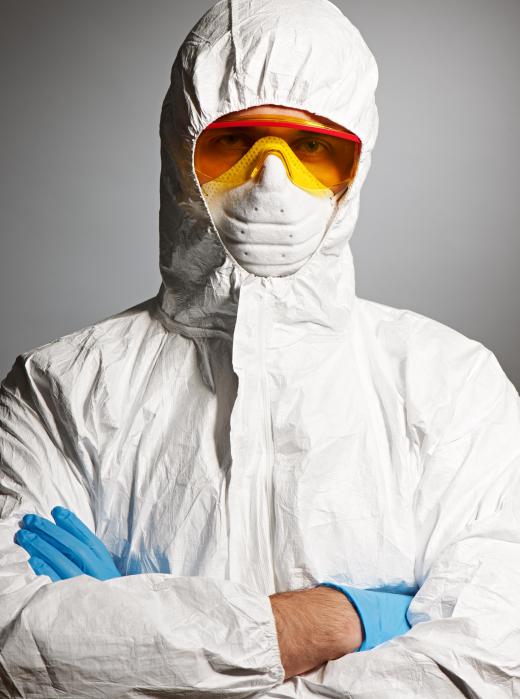A sandblasting hood is a device worn over the head of a person performing the task of sandblasting. The wearing of a sandblasting hood allows the blasting personnel not only to avoid breathing in the very fine granules of sand and dust, but it also prevents the blasting media from entering the operator's eyes and ears. The fine blasting particles can be aggravating to the skin, and they can often be toxic and potentially deadly to ingest or breathe. The sandblasting hood commonly contains extra material that enables the wearer to tuck it into other protective clothing item or to pull the hood bottom down over the shoulders, thereby preventing blasting media from entering the wearer's suit through the neck area.
There are two basic types of hoods to choose from. One type of sandblasting hood uses no added breathing apparatus, while the other involves the use of a fresh air breathing supply hose attached to the hood. For small jobs, the regular sandblasting hood can be used; however, on very long and involved blasting jobs, the fresh air hood is mandatory. The fresh air hood not only supplies fresh air for the operator to breathe, it also filters out toxic airborne matter that could injure the wearer. Often, old paint that is being removed can contain chemical solvents that are potentially dangerous to inhale while blasting.

The extremely fine makeup of the blasting media used in sandblasting requires wearing a protective suit to keep the materials out of the blaster's clothing and away from the skin. The sandblasting hood is a component of the suit and is commonly made of a heavy canvas or similar type of material. The hood is fitted with a glass or polycarbonate viewing shield to allow a clear and unobstructed view of the work being performed. The suit can be very uncomfortable to wear due to the heavy weight of the sandblasting hood material. The heat retention properties of the suit also make it very warm in even the coolest of temperatures.

Ear plugs or muffs are typically worn under the sandblasting hood to aid in the elimination of noise. The sandblasting technique produces a loud noise similar to a jet airplane engine and can damage unprotected hearing. Some versions of the sandblasting hood contain a hard hat that is able to protect the worker from falling objects when blasting on a construction site. The wearing of this protective hood is mandatory on most construction and demolition job sites worldwide.
